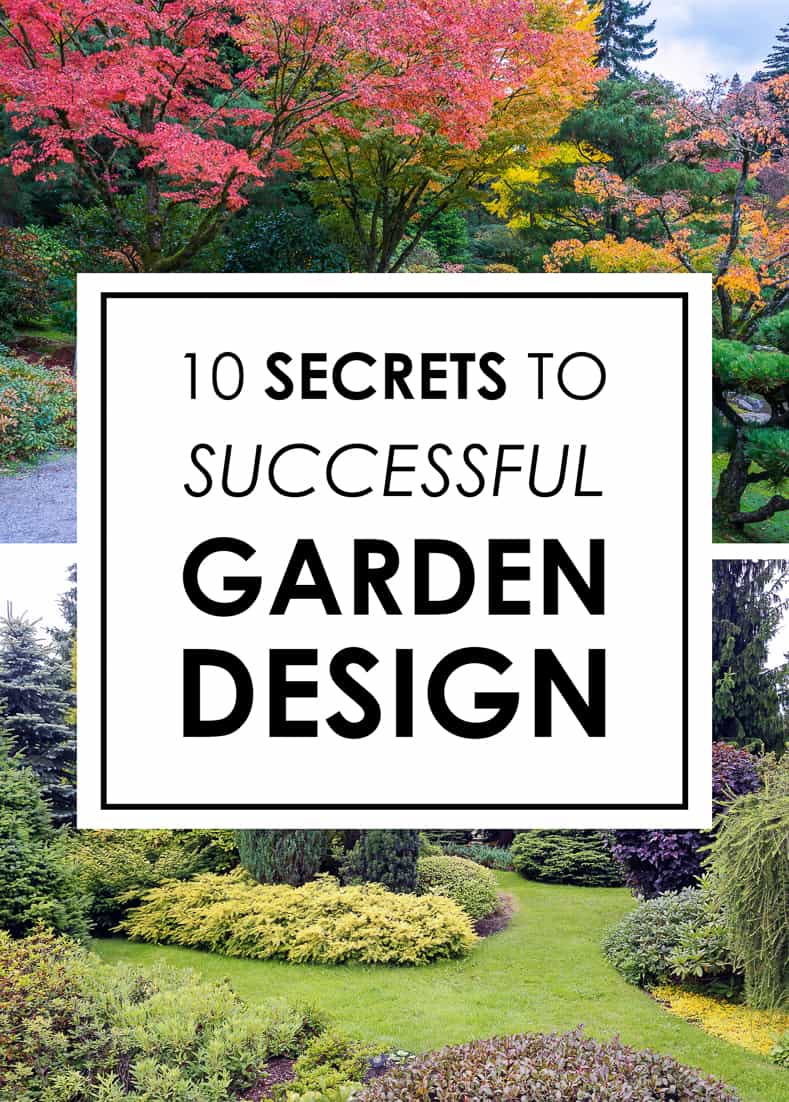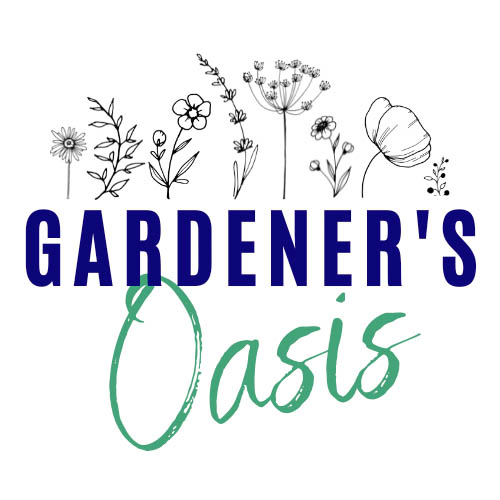10 Game-Changing Tips for Crafting Your Dream Garden Oasis
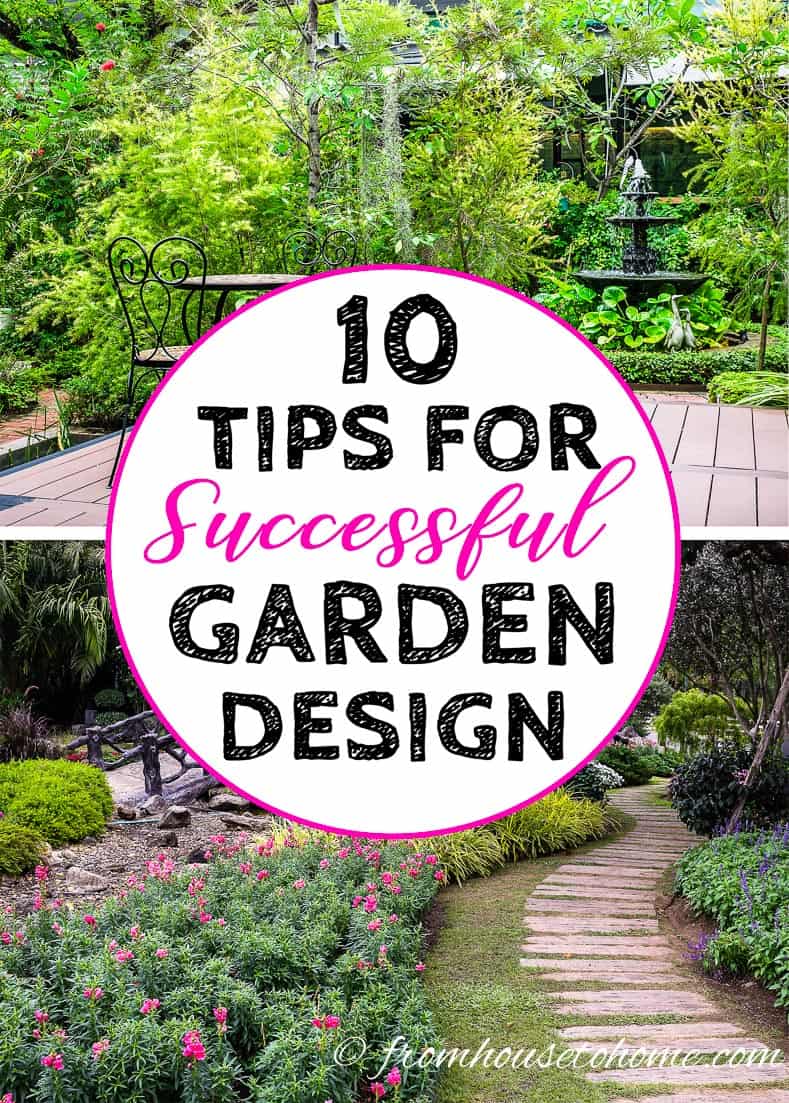
After many years of gardening, and making lots of mistakes, I have learned a few tried-and-true “rules” that help to make a successful landscape design.
I hate to use the word “rules”, since most of the time I think rules are made to be broken. But in this case, doing these simple steps has always worked out well for me, so I do actually follow them.
Click Next to find my secrets to designing a successful landscape.
Have a Plan
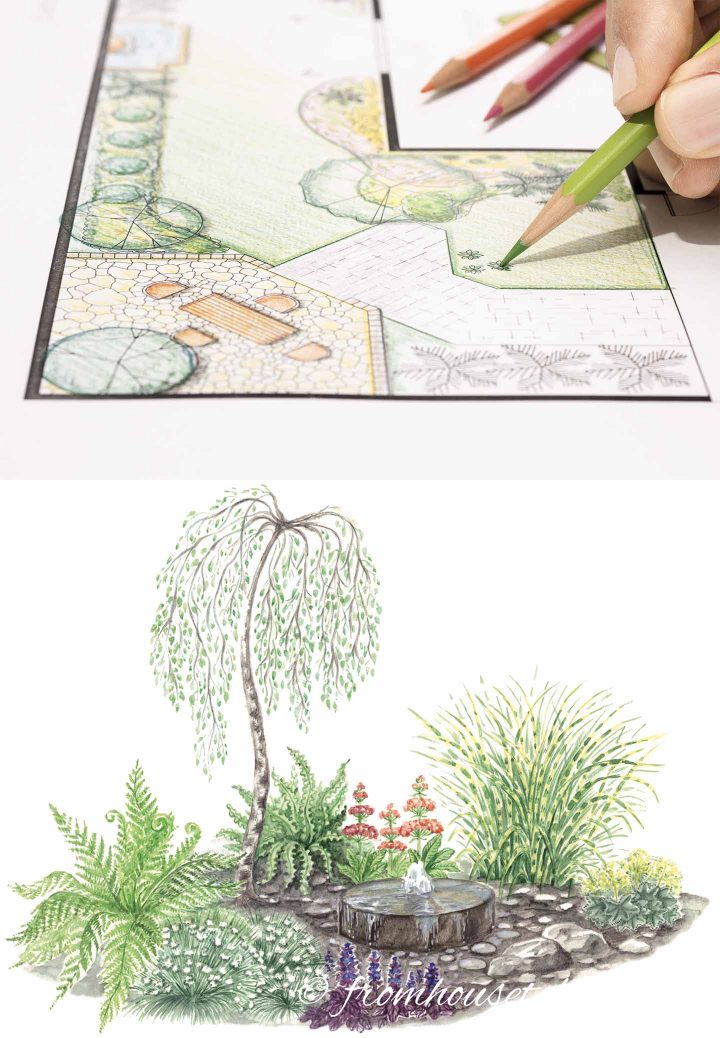
I think most gardeners have experienced the issue with not having a plan…you go to the nursery and buy a whole bunch of beautiful plants…and then don't have a good place to put them. To be honest, this scenario happens to me sometimes even when I do have a plan 🙂
However, it is much easier to create a cohesive landscape that looks put together if you have planned it out ahead of time.
You don't need to have fancy drawings like the ones above, but a to-scale outline of your yard is helpful so you know how much space you have to work with.
Keep reading to find out the major elements you need to include in your plan to create a successful landscape design.
Include Structures
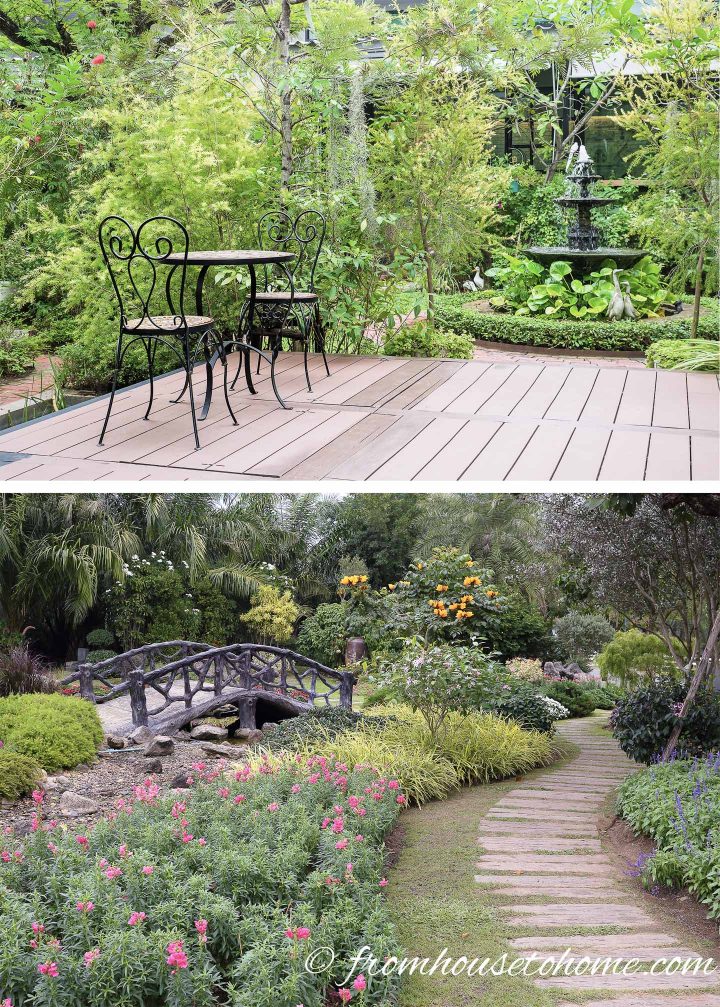
Structures (like decks, patios, gazebos, outdoor kitchens, etc.) are the bones of the garden. They add interest to your yard and shape the way the garden looks.
They are also much easier to put in before you have planted a lot of plants, so make sure you include structures in your plan from the beginning.
Plan For Trees
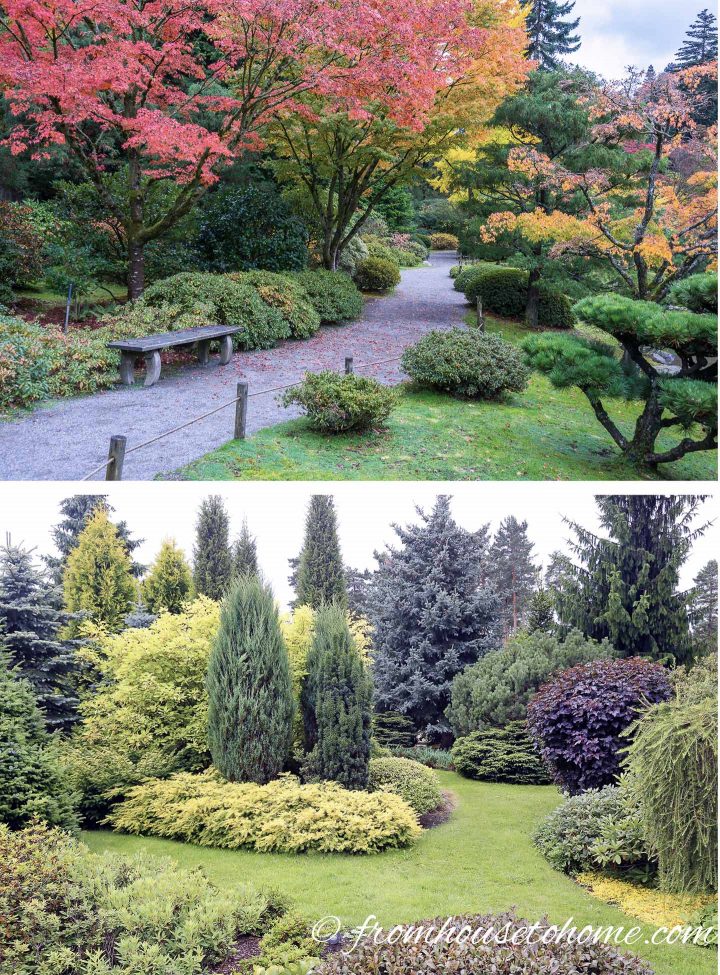
Trees are another element of your landscape that will shape how the yard looks. Once they get bigger, they will create shade, and may dictate the types of plants or grass that will grow under them.
In your plan, make sure to take into account the mature size of the trees and how long they take to grow. It will help to determine what you can plant around them.
Add “Rooms”
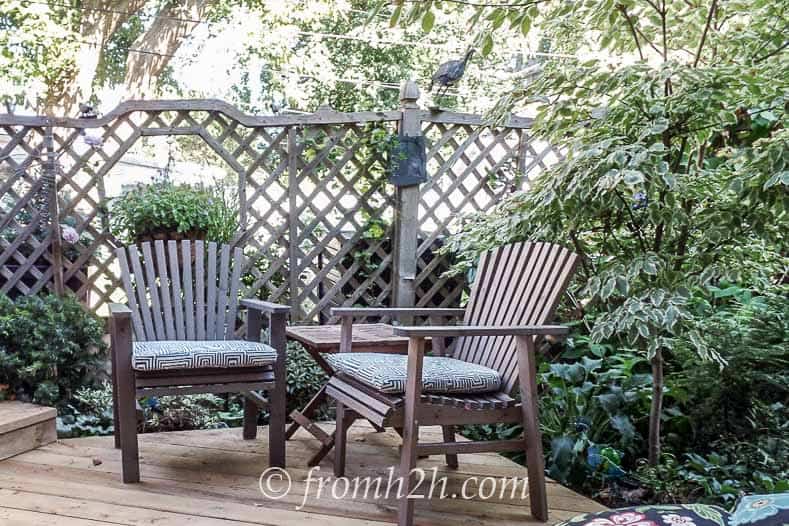
Garden “rooms” break up the yard into sections and help to add the element of surprise by preventing visitors from seeing all of your landscape at one time.
That also helps to create some privacy and the feeling of a secret garden.

These rooms don't have to be physical structures (like a gazebo or deck), a curved garden bed or a few bushes that define an area will work as well.
Build Paths
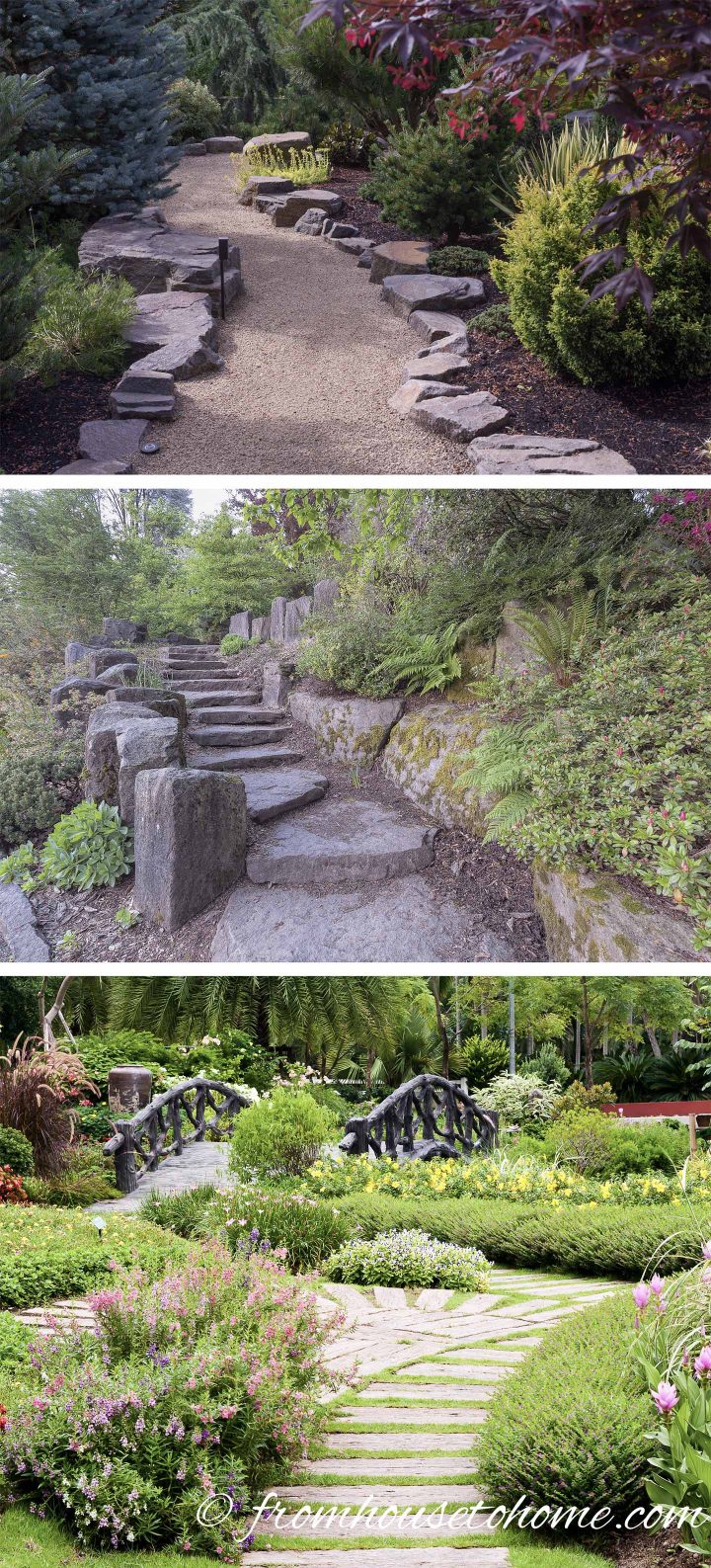
Paths give your visitors a defined walkway in your landscape, and help lead your visitors through your garden rooms.
Obviously, they are also functional, making it easier to roll wheelbarrows and wagons through your yard.
You Might Also Like: Garden Path Ideas To Create A Beautiful Walkway
Include Some Curves
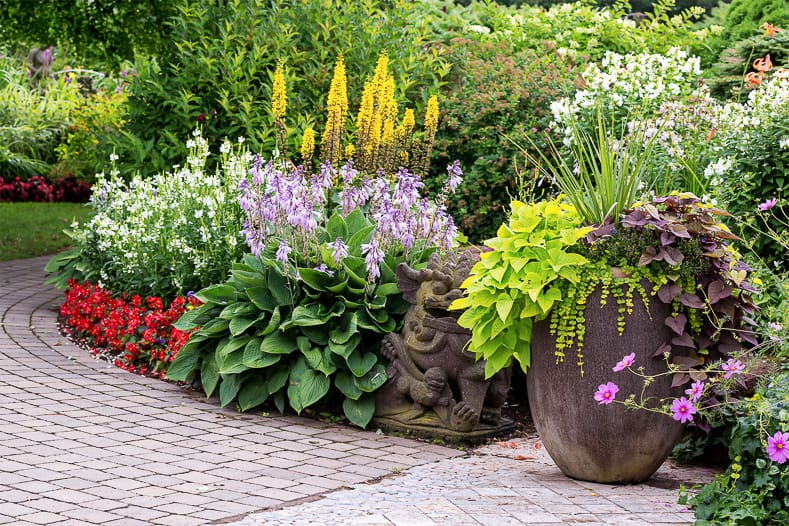
Unless you are creating a very formal garden, curves make the most natural looking garden beds.

They can also add interest to the structural areas of your landscape.
As an added benefit, if your lawn is next to the garden bed, it is so much easier to mow along a curved edge.
Add Gates and Arbors
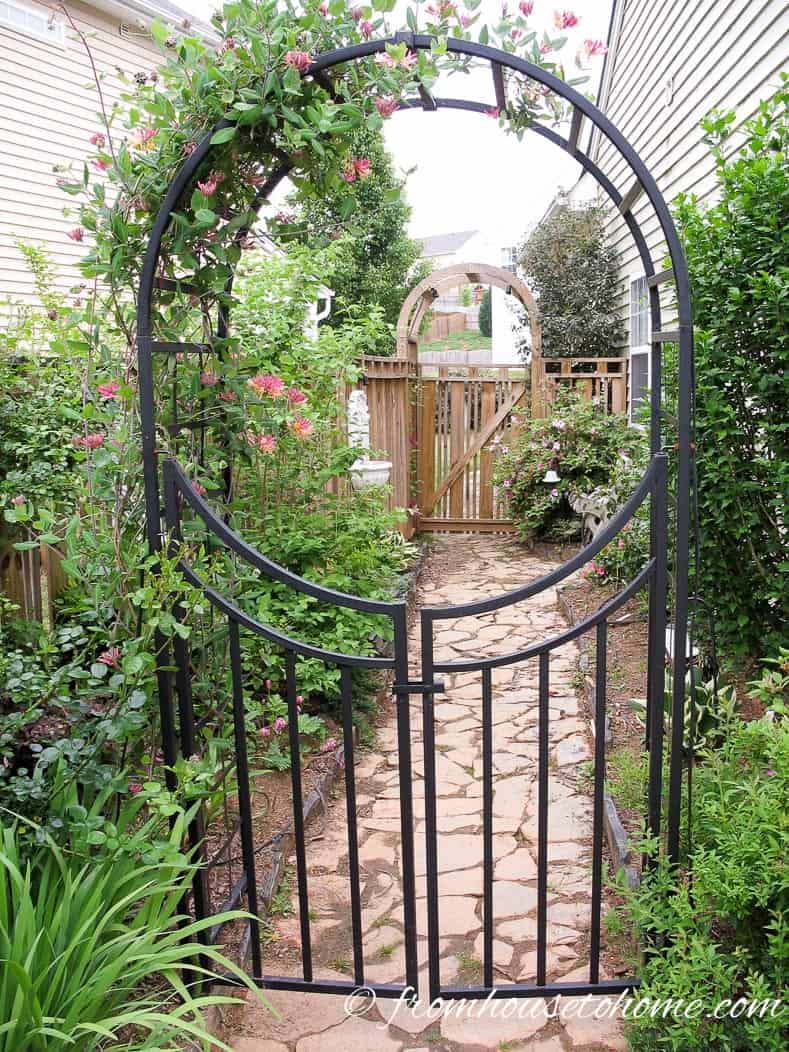
Gates and arbors are really easy ways to create the look of a “room”. They provide a defined entry way that everyone recognizes.
You Might Also Like: Creative Garden Gate Ideas

Arbors create a built-in focal point by creating a frame. And gates add some mystery by partially obstructing the view behind them.
Create Focal Points
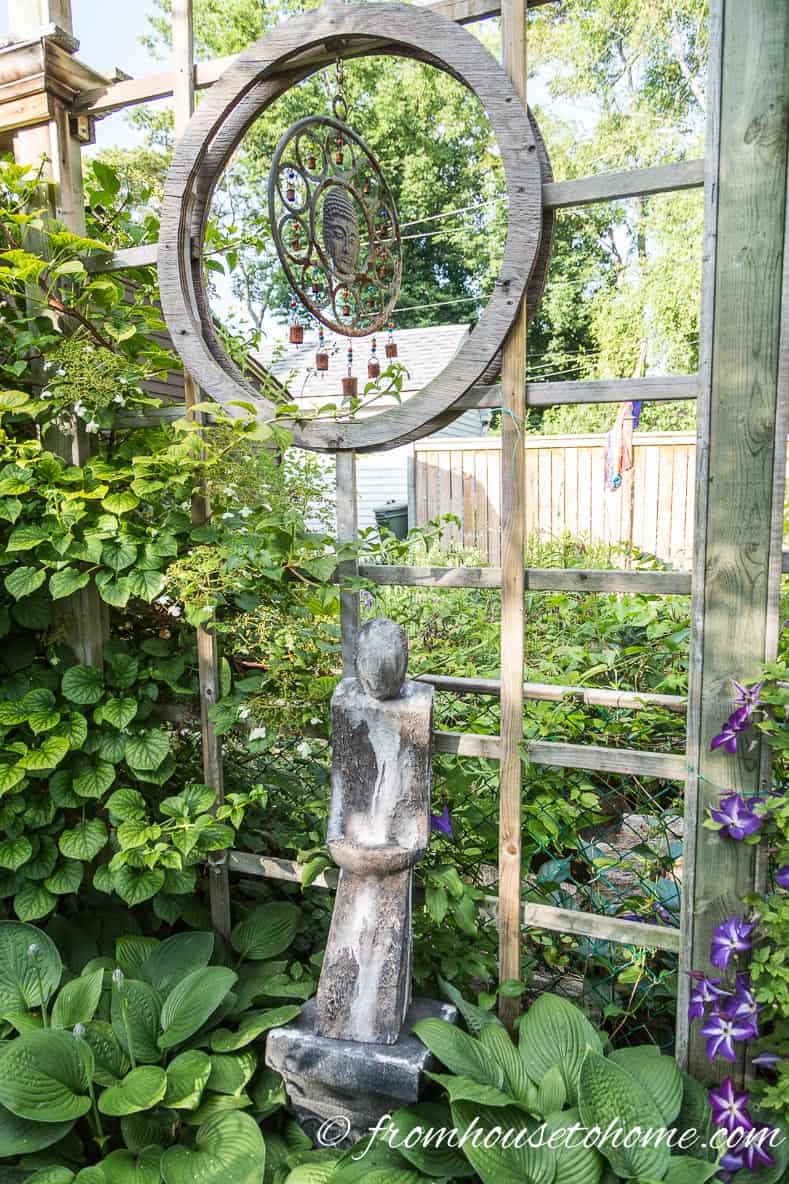
Just like in your home, focal points are important in your garden design as well. They draw attention to themselves and add some pizzazz to the landscape.
Focal points can be anything that catch your eye, like a statue and interesting fence design. (You can find more ways to add art to your garden HERE).

A show-stopping plant like this Japanese peony will also do the trick (find out more about this peony and other shade-loving bushes HERE).
Add Lighting

Lighting is an often forgotten part of designing a successful landscape. It is what adds drama to your yard after dark and makes sure your focal points are highlighted.
Having to hook up electrical wires prevents a lot of people from planning this portion of their landscape, but it really isn't as hard as you think.
Find out more from our landscape lighting series HERE.
Pick The Right Plants
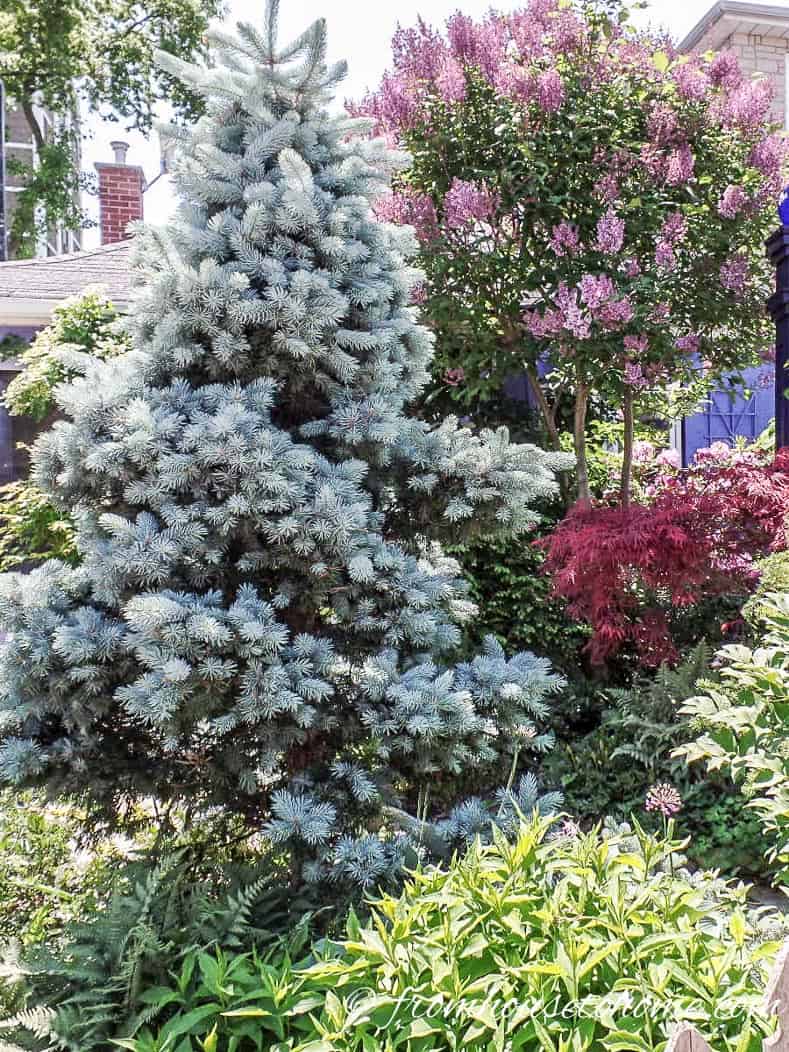
Last but not definitely not least is to pick the right plants.
A lot goes into this part of the planning such as where you live, how much sun your yard gets, what type of soil you have and how much maintenance you want to do.
You can learn more about picking the right plants HERE.
Pin It So You Don't Forget It!
